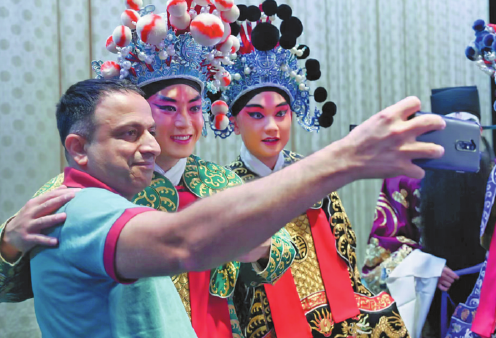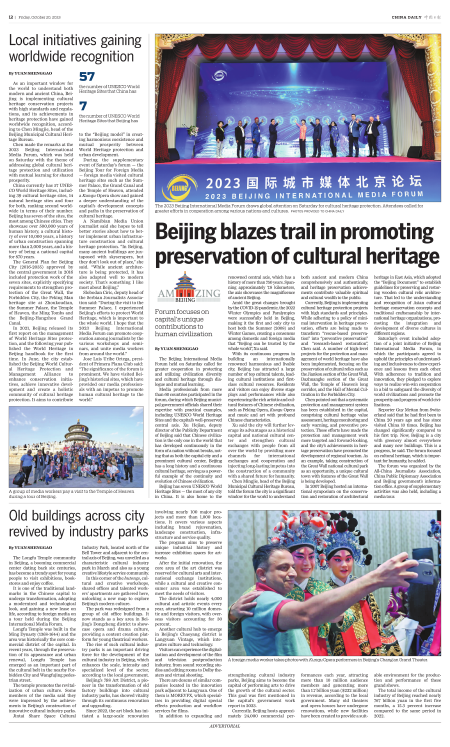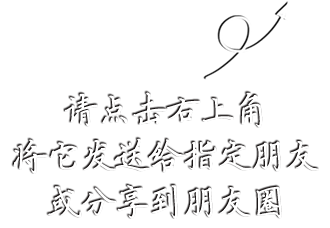
A foreign media worker takes photos with Kunqu Opera performers in Beijing's Chang'an Grand Theater.
The Longfu Temple community in Beijing, a booming commercial center dating back six centuries, has become a trendy spot for young people to visit exhibitions, bookstores and enjoy coffee.
It is one of the traditional landmarks in the Chinese capital to undergo transformation, adopting a modernized and technological look, and gaining a new lease on life, according to foreign media on a tour held during the Beijing International Media Forum.
Longfu Temple was built in the Ming Dynasty (1368-1644) and the area was historically the core commercial district of the capital. In recent years, through the preservation of its appearance and urban renewal, Longfu Temple has emerged as an important part of the cultural belt in the nearby Forbidden City and Wangfujing pedestrian street.
The temple promotes the revitalization of urban culture. Some members of the media said they were impressed by the achievements in Beijing's construction of innovative cultural industry parks.
Jintai Share Space Cultural Industry Park, located north of the Bell Tower and adjacent to the central axis of Beijing, was unveiled as a characteristic cultural industry park in March and also as a young creative lifestyle service community.
In this corner of the hutongs, cultural and creative workshops, shared offices and talented workers' apartments are gathered here, unlocking a new map to explore Beijing's modern culture.
The park was redesigned from a group of old office buildings. It now stands as a key area in Beijing's Dongcheng district to showcase opera and drama culture, providing a content creation platform for young theatrical workers.
The rise of such cultural industry parks is an important driving force for the development of the cultural industry in Beijing, which enhances the scale, intensity and specialized level of the sector, according to the local government.
Beijing's 798 Art District, a pioneer in the transformation of old factory buildings into cultural industry parks, has showed vitality through its continuous renovation and upgrading.
Since 2022, the art block has initiated a large-scale renovation involving nearly 100 major projects and more than 1,000 locations. It covers various aspects including brand rejuvenation, landscape construction, infrastructure and service quality.
The program aims to preserve unique industrial history and increase exhibition spaces for artworks.
After the initial renovation, the core area of the art district was reserved for cultural arts and international exchange institutions, while a cultural and creative consumer area was established to meet the needs of visitors.
The district holds nearly 4,000 cultural and artistic events every year, attracting 10 million domestic and foreign visitors, with overseas visitors accounting for 30 percent.
Another cultural hub to emerge in Beijing's Chaoyang district is Langyuan Vintage, which integrates culture and technology.
Visitors can experience the digitalization and development of the film and television postproduction industry, from sound recording studios and editing rooms to Dolby theaters and virtual shooting.
There are dozens of similar companies located in the innovation park adjacent to Langyuan. One of them is MOREVFX, which specializes in providing digital special effects production and workflow services for films.
In addition to expanding and strengthening cultural industry parks, Beijing aims to become the capital of performing arts to drive the growth of the cultural sector. This goal was first mentioned in the capital's government work report in 2023.
Currently, Beijing hosts approximately 24,000 commercial performances each year, attracting more than 10 million audience members and generating more than 1.7 billion yuan ($232 million) in revenue, according to the local government. Many old theaters and opera houses have undergone renovations, while new facilities have been created to provide a suitable environment for the production and performance of these grand shows.
The total income of the cultural industry of Beijing reached nearly 767 billion yuan in the first five months, a 15.3 percent increase compared to the same period in 2022.

